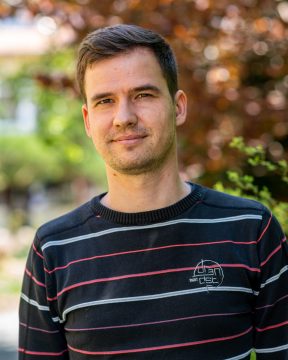István Balogh is Assistant Professor and Head of the Department of Judaism at the Jewish Theological Seminary – University of Jewish Studies (OR-ZSE). He received a BA degree in 2009 (Teacher of Judaism) and a MA degree in 2011 (Jewish Cultural Historian). In 2018 he successfully defended his doctoral dissertation, “The 18th century Hungarian Jewish tombstones: analysis and database” at the Jewish Theological Seminary – University of Jewish Studies (OR-ZSE) earning a PhD degree in Judaic Sciences. The areas of specialization of István Balogh include the history of the Jews from the Békés County, Hungary, the Jewish funeral culture and the protection of Jewish heritage. In his research work, István Balogh aims to develop and apply innovative, community-based methodologies for processing, exposition and preservation of the Hungarian Jewish monumental heritage, in particularly the Hungarian Jewish cemeteries.
In 2008, István Balogh curated the “Tevan exhibition”, an interactive traveling exhibition on the history of the Tevan Printing House, which until 2013 was presented in 35 places across Hungary. In 2011 on his initiative, the Jewish cemetery in Dévaványa was proclaimed a protected heritage site by Ministry of National Resources. Between 2013 and 2016, István Balogh worked on creating a list of the Holocaust victims from the Békés County. This list containing the names of around 5.000 victims of the Holocaust can nowadays be found inscribed on the Békéscsaba Memorial Wall, built under his initiative and expertise in 2016.
István Balogh has published numerous articles and edited book chapters as well as three monographs: “The History of the Jews of Tótkomlós” (2004), “Peaceful Unrest: the History of the Jews of the Békés County” (2007), “The History of the Jews of Körösnagyharsány and their cemeteries” (2009).
Since 2020 István Balogh is conducting a research in Kőszeg, consisting of recording, processing and analysis of the tombstones of the local Jewish cemetery. In addition to the digital documentation of the cemetery and the recording of the Hebrew, German and Hungarian texts on the monuments, his research also deals with examination of the linguistic characteristics of the inscriptions, the formal features of the epitaphs, and their condition.
